Marketing today moves fast—and so should your strategy. If your team is still juggling emails, social posts, lead nurturing, and reporting manually, it’s time to automate.
With the right marketing automation tools, you can streamline repetitive tasks, deliver personalized experiences at scale, and convert more leads into loyal clients—all while freeing up your team to focus on growth.
Whether you’re a marketing agency managing dozens of local clients, a franchise coordinating national and local campaigns, or a service provider helping SMBs thrive, automation gives you the edge you need to stay competitive. But with so many platforms out there, how do you choose the right one?
In this guide, we’ll walk you through the benefits of marketing automation, what features to look for, and the best tools to consider in 2025.
Attract, convert, and retain more customers with less manual work
What Are Marketing Automation Tools?
Marketing automation tools are software platforms that help businesses streamline, execute, and monitor marketing tasks automatically, without requiring manual intervention at every step.
These tools are designed to improve efficiency, increase personalization, and scale marketing efforts across multiple channels such as email, social media, SMS, web, and paid ads.
At their core, marketing automation tools enable you to create intelligent workflows that facilitate customer journey automation—from awareness to conversion to retention.
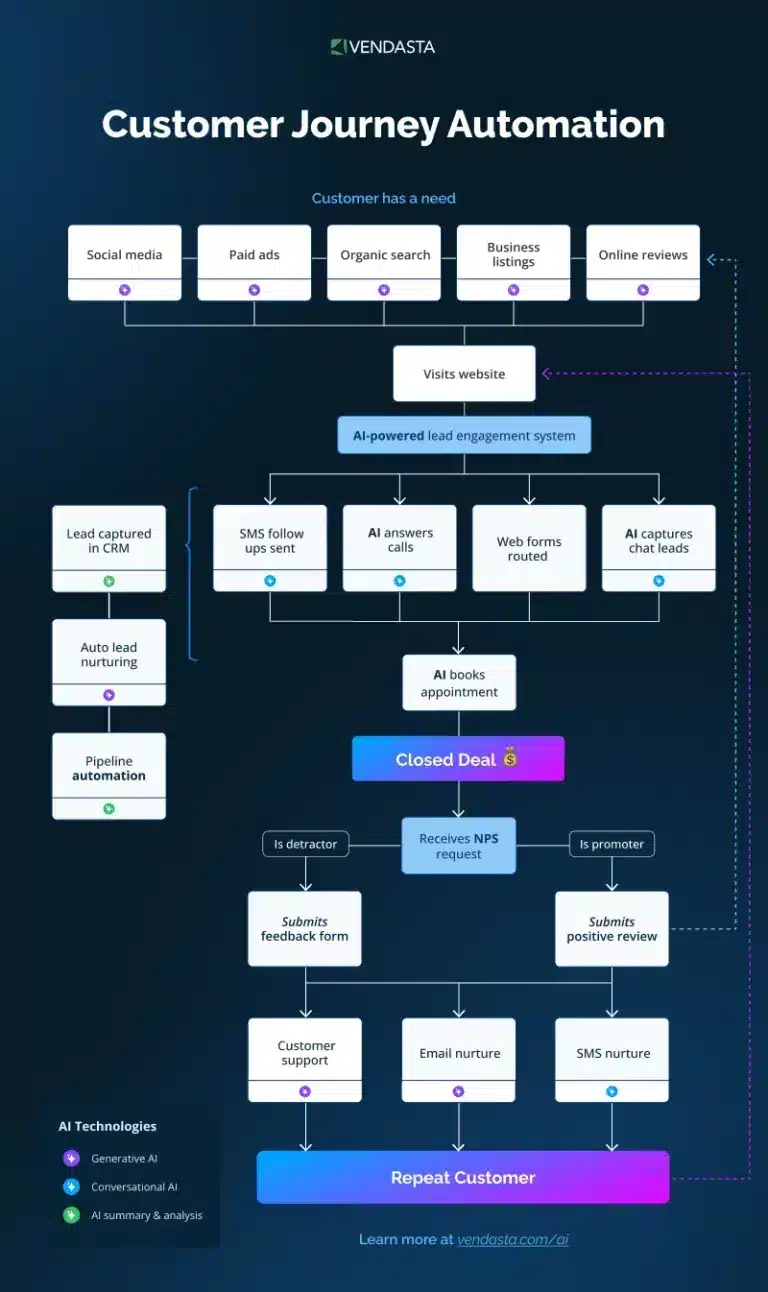
They trigger actions based on user behavior, segment your audience for personalized outreach, and provide real-time analytics to optimize campaign performance.
For marketing agencies, franchises, and businesses serving SMBs, marketing automation tools solve a critical pain point: managing high volumes of repetitive marketing tasks while delivering personalized, high-quality experiences to each client or prospect.
Instead of having your team manually follow up with leads or copy-paste emails into sequences, automation ensures that every message goes out at the right time, to the right audience, with the right content.
Key functions typically include:
- Email Marketing Automation: Send targeted messages based on user actions, time delays, or lifecycle stages.
- Lead Scoring and Segmentation: Automatically qualify leads and sort them into segments based on behavior, demographics, or engagement.
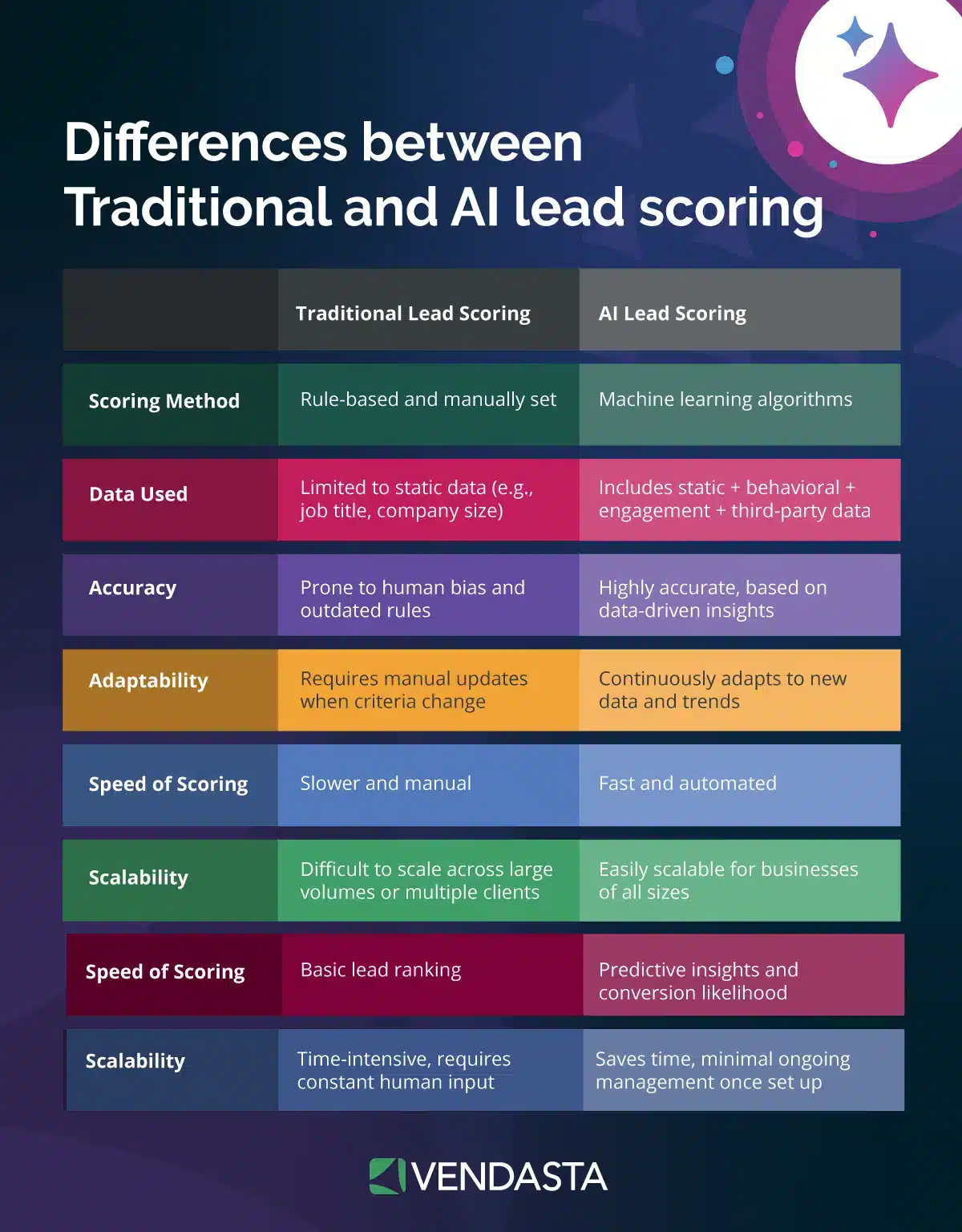
- Workflow Automation: Set up sequences that handle everything from welcome emails to re-engagement campaigns without manual effort.
- Multi-Channel Campaign Management: Launch campaigns that coordinate across platforms like email, social, SMS, and landing pages.
- Analytics and Reporting: Monitor open rates, conversion rates, click-throughs, and more to track success and refine strategies.
Ultimately, marketing automation tools help you do more with less, reducing overhead, increasing campaign effectiveness, and allowing your team to focus on strategy instead of execution.
Benefits of Implementing Marketing Automation Tools
The right marketing automation tools can transform how your business operates—boosting productivity, improving lead quality, and enhancing the client experience.
Whether you’re managing campaigns for dozens of SMB clients or scaling operations across multiple franchise locations, automation gives your team the structure and scalability needed to grow efficiently.
Here are the key benefits of implementing marketing automation:
1. Increased Operational Efficiency
Automation handles repetitive tasks such as sending follow-up emails, scheduling social media posts, segmenting contacts, and assigning leads—allowing your team to focus on strategy and creative execution. This saves hours of manual work each week and reduces the risk of human error.
2. Better Lead Nurturing and Conversion Rates
Marketing automation allows you to set up drip campaigns and behavior-triggered workflows that guide prospects through your sales funnel. By delivering the right message at the right time, you keep leads engaged and moving toward conversion without requiring constant oversight from your team.
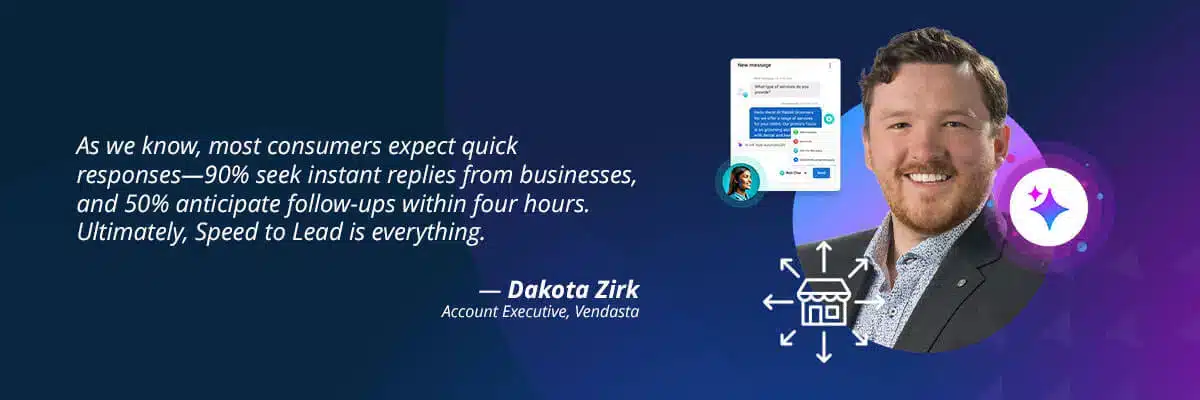
3. Personalized Customer Experiences at Scale
Today’s consumers expect tailored experiences. Marketing automation tools let you segment audiences by behavior, location, or demographics and customize content accordingly. This means SMB clients or local franchise locations can receive communications that feel personal—even when automated.
4. Improved Client Retention and Loyalty
Automation doesn’t stop after the sale. You can use it to send onboarding emails, request reviews, deliver educational content, and check in regularly. These touchpoints help build long-term client relationships and improve retention, especially important for service-based businesses.
5. Data-Driven Decision-Making
Most marketing automation platforms come with built-in analytics and client reporting tools. These dashboards give you visibility into campaign performance, lead behavior, and customer engagement—empowering you to make informed, data-backed decisions that drive ROI.
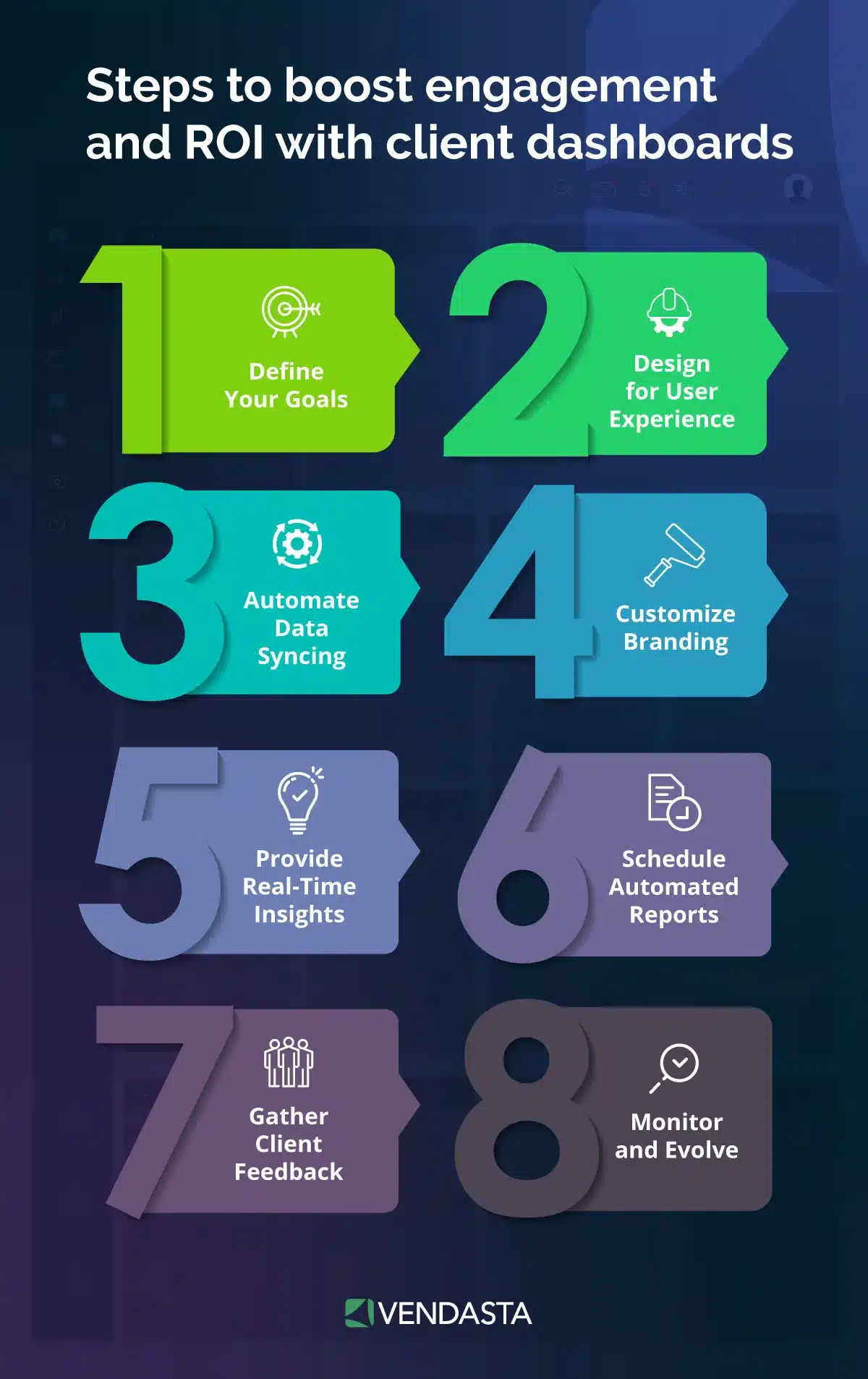
6. Scalability Without Burnout
Whether you’re managing 10 clients or 1,000, marketing automation allows your business to grow without overextending your team. Workflows can be duplicated, scaled, and customized to fit the needs of new clients or regions, making it easier to expand your services while maintaining quality and consistency.
7. Competitive Advantage for SMB-Focused Teams
For agencies and service providers supporting small and medium-sized businesses, automation helps deliver professional, high-impact marketing services that rival those of much larger organizations. This levels the playing field and positions you as a strategic partner, not just a vendor.
By investing in marketing automation tools, you’re not just saving time—you’re building a scalable marketing engine that increases revenue, improves the customer journey, and empowers your team to do their best work.
Top Marketing Automation Tools in 2025
Choosing the right marketing automation tool is essential for scaling your business, enhancing client relationships, and delivering personalized experiences at scale.
Below are four top-performing platforms in 2025 that stand out for their capabilities, flexibility, and real-world results, especially for marketing agencies, franchises, and SMB-focused providers.
Vendasta’s Customer Engagement and Acquisition Platform
Overview:
Vendasta’s white-label platform is designed specifically for marketing agencies, franchises, and service providers who support SMBs.
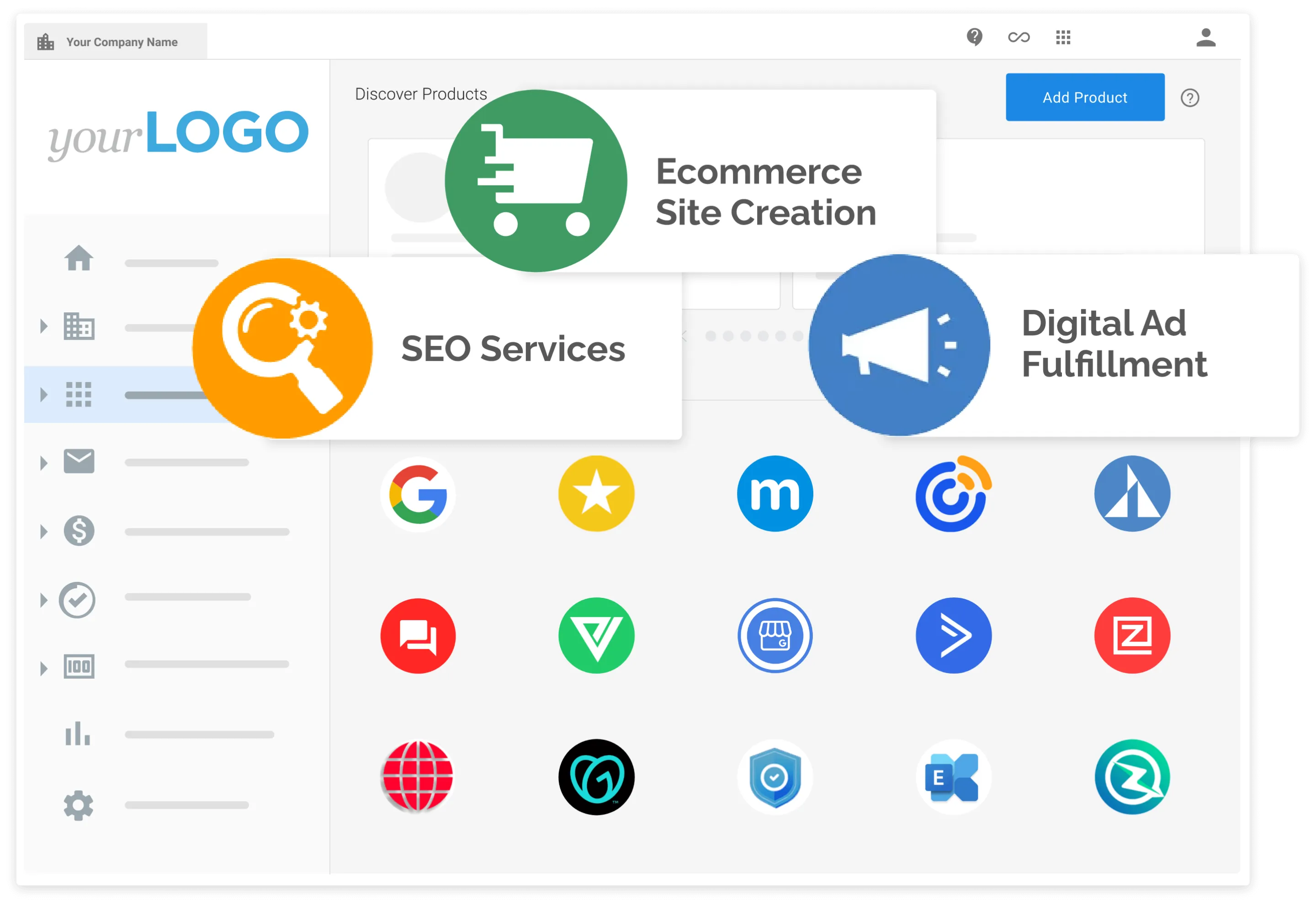
Unlike traditional automation tools that focus solely on marketing workflows, Vendasta combines marketing automation with CRM, sales enablement, reputation management, and fulfillment, making it a true end-to-end client acquisition and management software.
Key Features:
- Automated email and nurture campaigns with customizable triggers.
- CRM-integrated workflow automation for both sales and marketing teams.
- Multi-location campaign management for franchises and resellers.
- White-label client portals and automated reporting.
- Integration with Google, Facebook, Mailchimp, and more.
Ideal Use Cases:
Vendasta is ideal for agencies managing multiple SMB clients who need to automate onboarding, nurture campaigns, and lead generation while maintaining brand consistency. It’s also an excellent fit for franchises looking to coordinate marketing efforts across local operators with centralized control.
Pardot (Salesforce Marketing Cloud Account Engagement)
Overview:
Pardot is Salesforce’s B2B marketing automation solution, built for businesses that want deep alignment between marketing and sales teams. As part of the Salesforce ecosystem, it offers powerful lead management, scoring, and campaign tracking within a unified CRM platform.
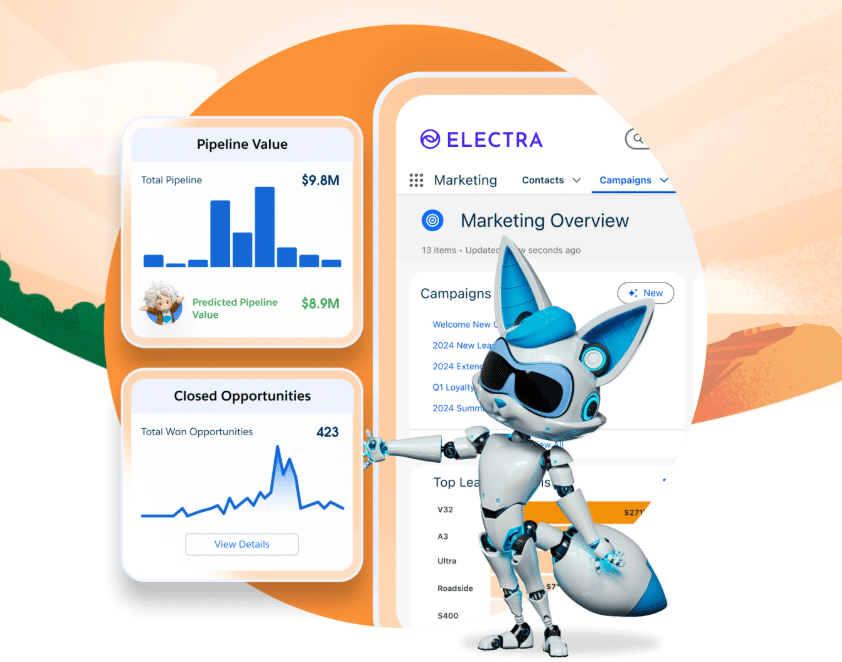
- Behavior-based email automation and drip campaigns.
- Advanced lead scoring, grading, and routing.
- Detailed ROI and attribution reporting.
- Seamless Salesforce CRM integration.
- AI-powered insights and personalization.
Ideal Use Cases:
Pardot is best suited for B2B-focused agencies and enterprises with complex sales cycles and large teams already using Salesforce. It’s especially valuable for account-based marketing strategies and businesses that require advanced segmentation and real-time sales alerts.
Marketo Engage (Adobe)
Overview:
Marketo, part of Adobe Experience Cloud, is a powerful marketing automation platform built for enterprises. It offers robust capabilities for cross-channel marketing, lead nurturing, and advanced personalization. With a deep focus on scalability and data-driven automation, Marketo is favored by teams with high-volume campaigns and global reach.
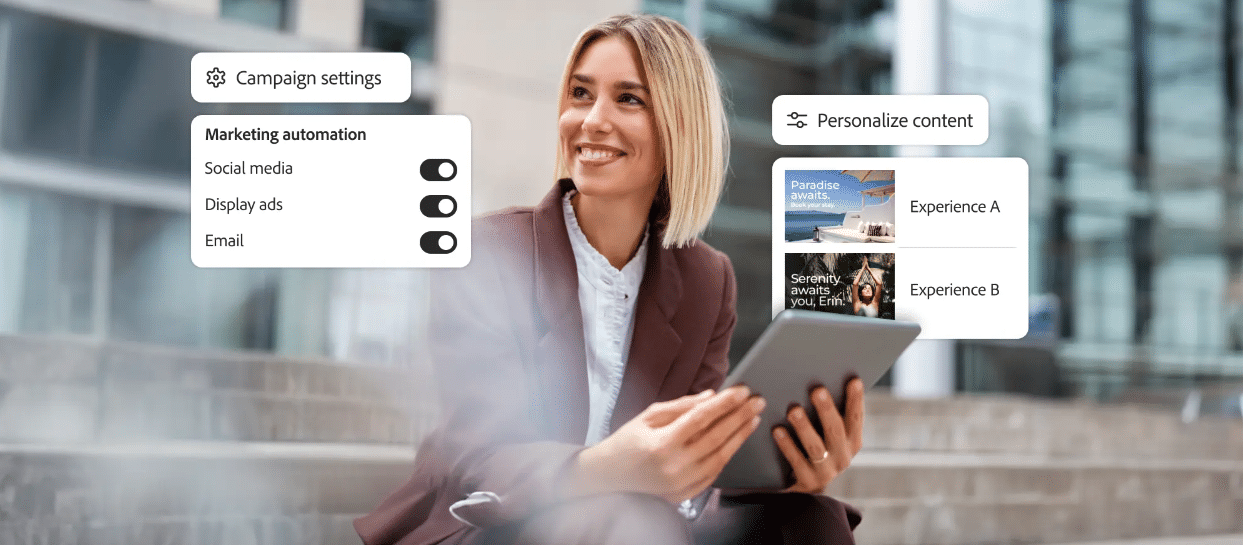
- Multi-touch campaign orchestration across email, web, mobile, and ads.
- AI-driven content personalization and predictive scoring.
- Integration with Salesforce and other CRMs.
- Custom workflow builders and robust reporting.
- Enterprise-level security and compliance support.
Ideal Use Cases:
Marketo is best for large agencies or franchise networks managing complex marketing ecosystems across regions. It’s particularly useful for businesses that need granular control over messaging, reporting, and customer journeys across multiple channels.
ActiveCampaign
Overview:
ActiveCampaign is a popular all-in-one platform offering marketing automation, email marketing, CRM, and sales automation for small to mid-sized businesses. Known for its user-friendly design and value for money, it empowers marketers to build targeted workflows and nurture leads with ease.
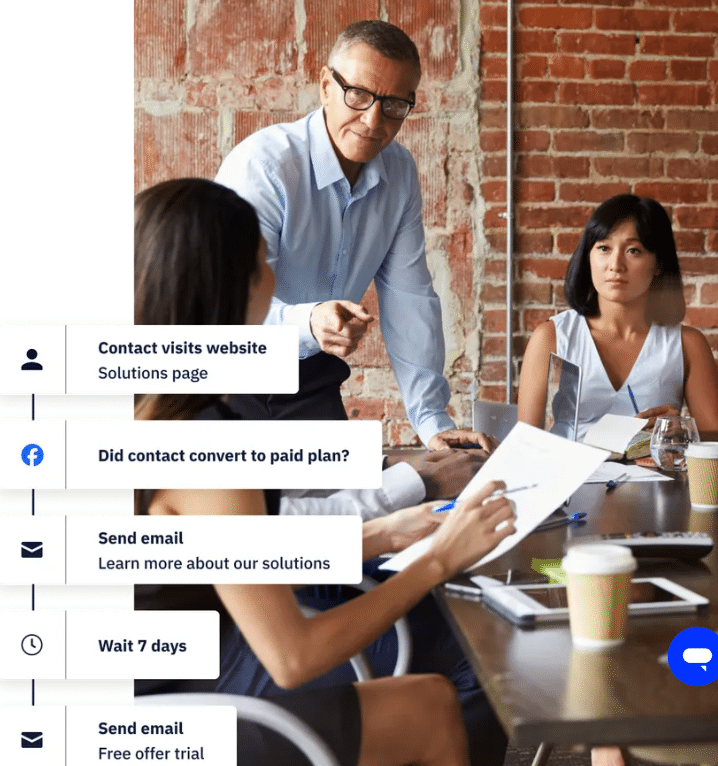
- Visual workflow builder with drag-and-drop automation.
- Email and SMS marketing capabilities.
- CRM with contact scoring and pipeline management.
- Site tracking and attribution.
- Over 900 integrations, including Shopify, WordPress, and Zapier.
Ideal Use Cases:
ActiveCampaign is a great fit for SMB-focused agencies that want to deliver automation at scale without overwhelming complexity. It’s ideal for teams looking to improve client retention, personalize outreach, and optimize conversion funnels without a steep learning curve.
Common Pitfalls and How to Avoid Them
Implementing marketing automation tools can revolutionize how your business operates—but only if you avoid the common marketing automation mistakes that can undermine results.

Whether you’re a marketing agency scaling client outreach, a franchise managing campaigns across multiple locations, or an SMB service provider modernizing your stack, steering clear of these pitfalls is essential to long-term success.
Here are the most common missteps—and how to avoid them:
1. Choosing a Tool That Doesn’t Fit Your Business Model
The Pitfall:
Many businesses jump into automation with a “bigger is better” mindset, only to discover that the tool they selected is too complex, too expensive, or not suited for their client base.
How to Avoid It:
Before choosing a platform, clearly define your SMART goals, workflows, and integration needs.
Focus on tools built for your use case—whether you need white-label options for resellers, localized campaign management for franchises, or lightweight automation for SMB clients.
2. Automating Without a Strategy
The Pitfall:
Too often, teams dive into automation without building a marketing automation strategy, leading to disjointed campaigns, poor engagement, and missed opportunities.
How to Avoid It:
Develop a clear automation strategy before launching. Map the customer journey, define key touchpoints, and identify what tasks should be automated (and which shouldn’t). Ensure every workflow aligns with your business goals and enhances the client experience.
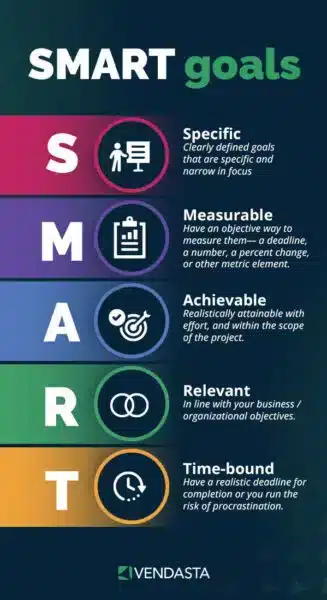
3. Ignoring Data Hygiene
The Pitfall:
Automating marketing efforts with outdated, duplicate, or unsegmented contact lists can lead to poor deliverability, inaccurate reporting, and frustrated leads.
How to Avoid It:
Regularly clean your contact database. Use tools that de-duplicate records, validate email addresses, and allow for easy segmentation. A well-organized CRM ensures that automation efforts reach the right people at the right time.
4. Over-Automating the Human Touch
The Pitfall:
While automation is powerful, relying on it too heavily can make your messaging feel robotic or impersonal—especially in client-facing roles. Ensuring an AI vs human balance is key.
How to Avoid It:
Use automation to scale, not to replace genuine connection. Combine automated campaigns with personalized follow-ups, handwritten notes, or client check-ins. Build in human checkpoints for critical interactions like onboarding or service reviews.
5. Neglecting Testing and Optimization
The Pitfall:
Setting up a workflow and letting it run indefinitely without review can lead to performance decay over time.
How to Avoid It:
Regularly A/B test subject lines, messaging, send times, and calls to action. Monitor key performance metrics such as open rates, click-through rates, and conversion rates. Use insights to refine and improve over time. Remember to keep tabs on your marketing automation ROI.
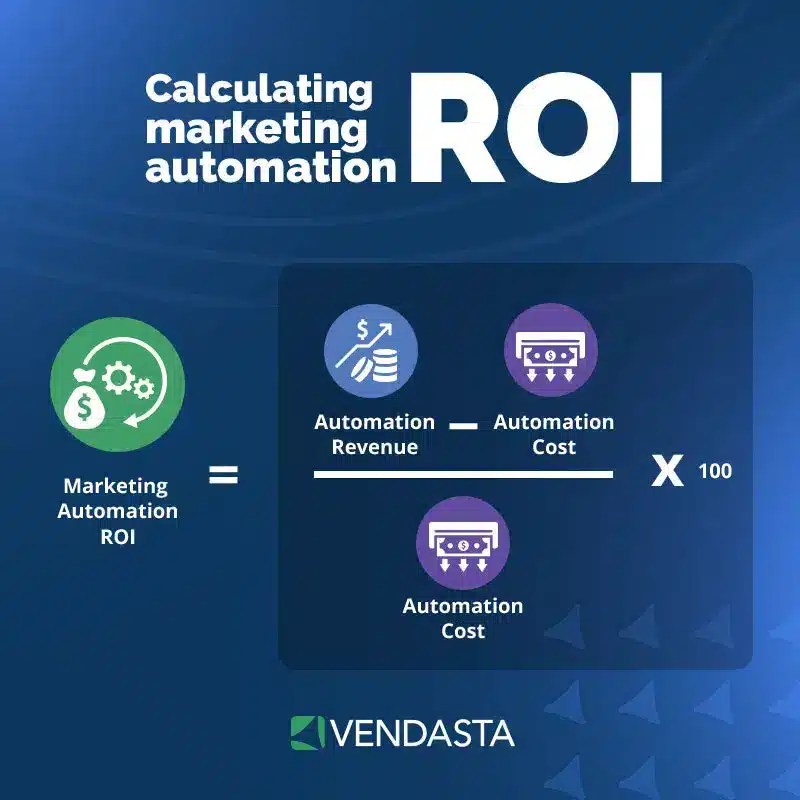
6. Failing to Train Your Team
The Pitfall:
Even the best marketing automation tools are ineffective if your team doesn’t know how to use them correctly.
How to Avoid It:
Invest in training and onboarding. Leverage vendor resources such as tutorials, webinars, certifications, or customer success teams. Make sure your team understands how to build, monitor, and optimize automation workflows with confidence.
7. Not Aligning Sales and Marketing
The Pitfall:
If marketing automation workflows aren’t aligned with sales processes, leads can fall through the cracks or be mismanaged.
How to Avoid It:
Ensure marketing and sales teams share a common CRM and have visibility into the same data. If you are ready, set up AI lead scoring and alerts that signal sales when a contact is ready to engage.
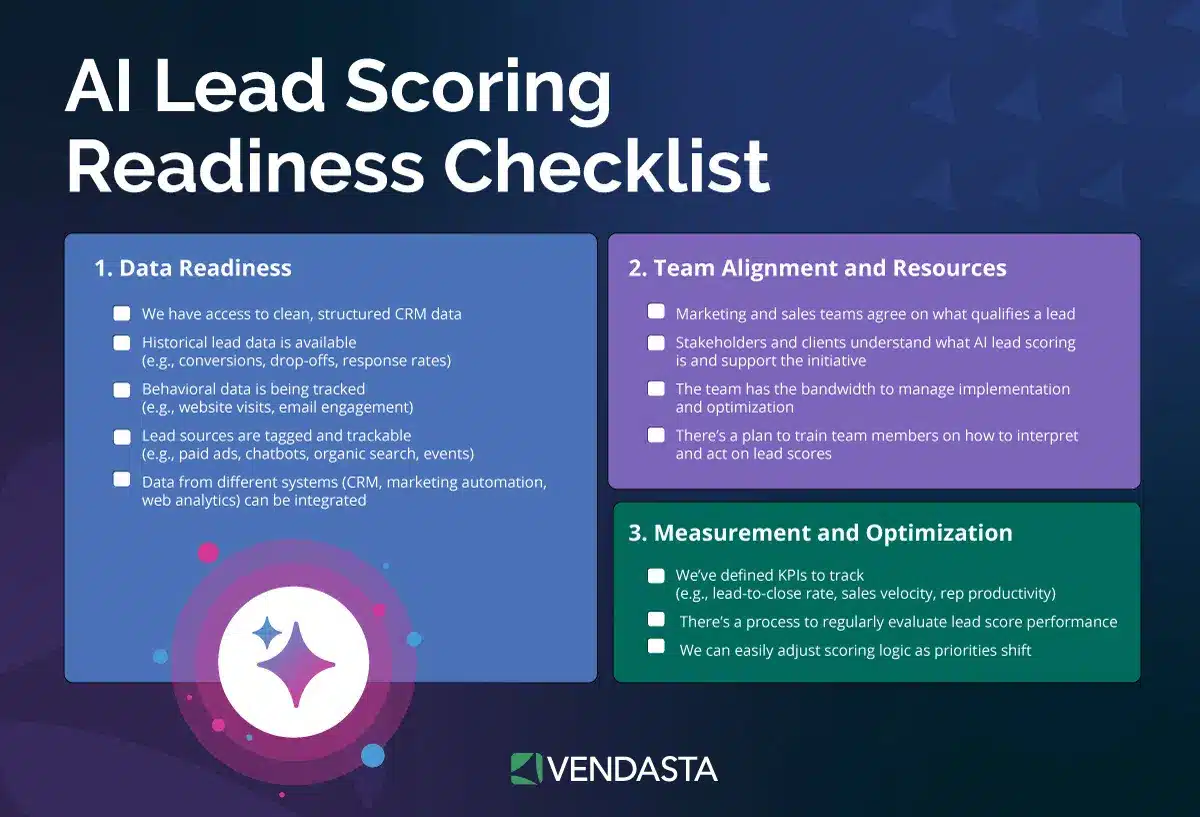
Empower Growth with the Right Marketing Automation Tools
Marketing automation is no longer a luxury—it’s a necessity for agencies, franchises, and businesses helping SMBs compete in a digital-first world.
The right tools can streamline your workflows, enhance personalization, improve lead conversion, and ultimately drive sustainable growth. But success doesn’t come from software alone. It comes from choosing a platform that aligns with your goals, supports your team, and scales with your business.
Vendasta’s all-in-one customer acquisition and engagement platform was built specifically for businesses like yours. Whether you manage local marketing at scale or support hundreds of SMB clients, Vendasta gives you the automation, insights, and white-label flexibility to grow with confidence.
Ready to see it in action? Book your free demo today and discover how Vendasta can help you simplify operations, delight clients, and scale smarter.
Frequently Asked Questions (FAQs)
1. What are marketing automation tools used for?
Marketing automation tools are used to streamline and automate repetitive marketing tasks such as email campaigns, lead nurturing, social media scheduling, customer segmentation, and performance reporting. They help businesses engage the right audience at the right time with personalized content—without manual effort.
2. Are marketing automation tools suitable for small businesses and agencies?
Yes. Many platforms offer scalable solutions tailored to small businesses and marketing agencies. Tools like Vendasta, ActiveCampaign, and HubSpot provide powerful features at price points and complexity levels that fit SMBs and service providers helping them grow.
3. How do marketing automation tools integrate with other systems?
Most automation platforms integrate with CRMs, email platforms, project management tools, ad networks, and analytics software. Vendasta, for example, offers seamless integrations with Google Workspace, Mailchimp, Facebook Ads, and many others, so your tech stack works in sync.
4. What’s the difference between CRM and marketing automation?
A CRM (Customer Relationship Management) system focuses on managing customer data and sales pipelines, while marketing automation tools focus on executing campaigns and nurturing leads. The best solutions—like Vendasta—combine both, offering a full view of the customer journey from lead to retention.
5. How long does it take to see results from marketing automation?
You can start seeing early wins—such as increased engagement or time saved—within the first few weeks. More significant results, like improved lead conversion or revenue growth, typically appear over a few months as you refine your workflows and strategy.
6. What features should I prioritize when choosing a marketing automation tool?
Look for ease of use, CRM integration, workflow customization, multi-channel campaign support, reporting capabilities, and scalability. For agencies and franchises, white-labeling and client portals may also be essential.
7. Can marketing automation replace human marketers?
No—but it can significantly enhance their effectiveness. Automation handles repetitive, rules-based tasks so your team can focus on strategy, creativity, and building stronger client relationships.
8. Is Vendasta a marketing automation tool?
Vendasta is more than a marketing automation tool—it’s a full customer acquisition and engagement platform. It combines automation, CRM, reputation management, email marketing, and fulfillment in one solution designed specifically for agencies, franchises, and businesses that support SMBs.
This article was originally published in December 2019 and was updated in July 2025 to include the latest information and insights.



